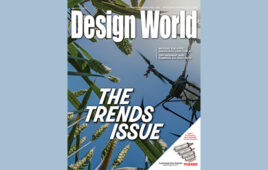Seismic shifts in manufacturing?
Sometimes, it takes a seismic-level event to change our way of thinking about workplace issues. We’ve had the capability to allow huge swaths of professionals to work remotely for years. Yet, it took the disruption of the Covid-19 pandemic — and its forcing so many workforces into working at home — to convince many managers that it could succeed.
Dijam Panigrahi, co-founder and COO of Grid Raster Inc., recently shared some insights as to why he thinks that manufacturing processes will also evolve rapidly. Panigrahi said that the pandemic has increased organizations’ reliance and appetite for additional automation technologies. Industry analysts say many manufacturers are looking to make these investments to increase efficiencies but also to maintain production cycles because of fears of additional waves of the virus.
Global automotive giants like GM and Toyota have been at the forefront of automation. Auto assembly plants have been using robots to automate a number of processes throughout the automotive factory and operations for years. Now, combined with technology such as AR and VR, which create virtual environments for design, production and customer service, these solutions are aiding in maintaining industrial efficiencies and supply chain schedules.
Panigrahi noted that the aviation industry has made great strides recently, where it has increasingly leveraged automation to enhance production cycles and drive down production costs. Boeing’s fully automated initiative — known as FAUB, for fuselage automated upright build — has been known for relying on robots working in tandem to drill accurate and precise holes while fastening together metal panels held upright to build the outer frame of its jets.
However, few aviation manufacturers have leveraged a true cloud infrastructure for their AR/VR design and engineering teams, instead relying on on-premise data resources that prevent the ability to share knowledge across organizations. Cloud technology for technologies such as AR/VR can enable greater information sharing, Panigrahi said, as designers outside the organization can research critical safety elements in other buildouts.
A big issue here is that enterprise-grade high-quality AR/VR platforms require both performance and scale. Device limitations often force developers to decimate contents (3D models/scenes) to fit to different mobile devices, spending months in the process and sacrificing on the overall quality of the experience. As virtual environments become richer and larger, the problem will compound. This cycle is repeated for each of the different AR/VR hardware platforms, making it difficult to move from experiments and pilots to full scale deployable solutions — stunting the speed of innovation and eff effectiveness.
AR/VR platforms powered by distributed cloud architecture and 3D vision-based AI seems an obvious answer here. Panigrahi feels that these AR/VR cloud platforms can provide the desired performance, accuracy and scalability to drive innovation in the industry at speed and scale.
What’s clear — after witnessing the year 2020 — is that manufacturing is adapting at an ever-increasing speed, meaning that the right answer will likely become clear in months, and not years.
Paul J. Heney – VP, Editorial Director
[email protected]
On Twitter @wtwh_paulheney
Filed Under: DIGITAL ISSUES • DESIGN WORLD




